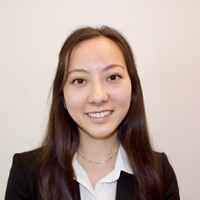Immersive Virtual Reality for Surgical Simulation Training
This summer, I worked with Dr. Williams, Dumon, and Yi in the Penn Surgery Department to develop a virtual reality (VR) surgical simulation. The group has been working to transition their teamwork training program from the operating room to a VR environment using the Facebook Oculus Quest 2 headset.
Currently, members of the operating room undergo teamwork training in emergency clinical scenarios at the Hospital of the University of Pennsylvania. It has been difficult to both secure an operating room for the all-day training and gather so many disparate peoples at one time and place. Transitioning this training into a VR environment would greatly facilitate its performance.
During the first stage of the project, I modeled objects such as a stethoscope in a 3D creation suite software called Blender. In addition, using an application called Polycam, I used the LiDAR scanner on an iPad to scan larger objects such as a crash cart. Scanned models had many imperfections, so I edited them in Blender. Editing involved adding colors and textures, adjusting polygons, and refining the architecture of the objects. After building and polishing, I moved the objects into Spatial.io - a platform that supports VR spaces. Via their headsets, members of the research group meet virtually and interact with objects in Spatial.
For the next stage of the project, I wrote a script for a VR thyroid hematoma simulation. This included detailing the objectives for surgical team members, listing the objects needed for the simulation, writing a background and health status on the “patient,” and generating a narrative of how the ideal scenario would play out. We created an algorithm outlining the possible outcomes that could result from different actions throughout the simulation. In the process, I learned about the surgical procedure of thyroidectomy, its complications, and a great deal about the interplay between medical professionals and the decision-making process in medicine.
Finally, I assisted in writing a literature review on immersive VR in medical education. My work involved searching databases such as PubMed for relevant articles and gaining a sense of what others have been doing with VR technology. While doing so, I was able to see gaps in the research currently being done with VR in medical education and form ideas for possible studies.
The team will soon run a pilot of the thyroid hematoma simulation, and the hope is to implement the VR in-situ simulation in the fall.
Through this project, I have learned more about VR, the medical field, and surgery, in particular. I was able to interact with medical students, residents, and specialists and got to observe Dr. Dumon’s robot-assisted gastric sleeve surgeries. While working on the literature review, I also gained knowledge on the current uses of VR technology in medicine and the future directions of this technology. I am very grateful to have had the opportunity to contribute to the project. PURM has complemented and greatly contributed to my educational experience because it has allowed me to confirm that I remain interested in medicine and studying the sciences.


Comments
Correct Zoom Link
Unfortunately, Caroline is unable to attend due to class conflicts, but I will be taking over in this zoom link!
https://zoom.us/j/97613622254?pwd=N1I5TmRLSVltMGZacXIrTXY1RW8rUT09
Correct Zoom Link
Unfortunately, Caroline is unable to attend due to class conflicts, but I will be taking over in this zoom link!
https://zoom.us/j/97613622254?pwd=N1I5TmRLSVltMGZacXIrTXY1RW8rUT09